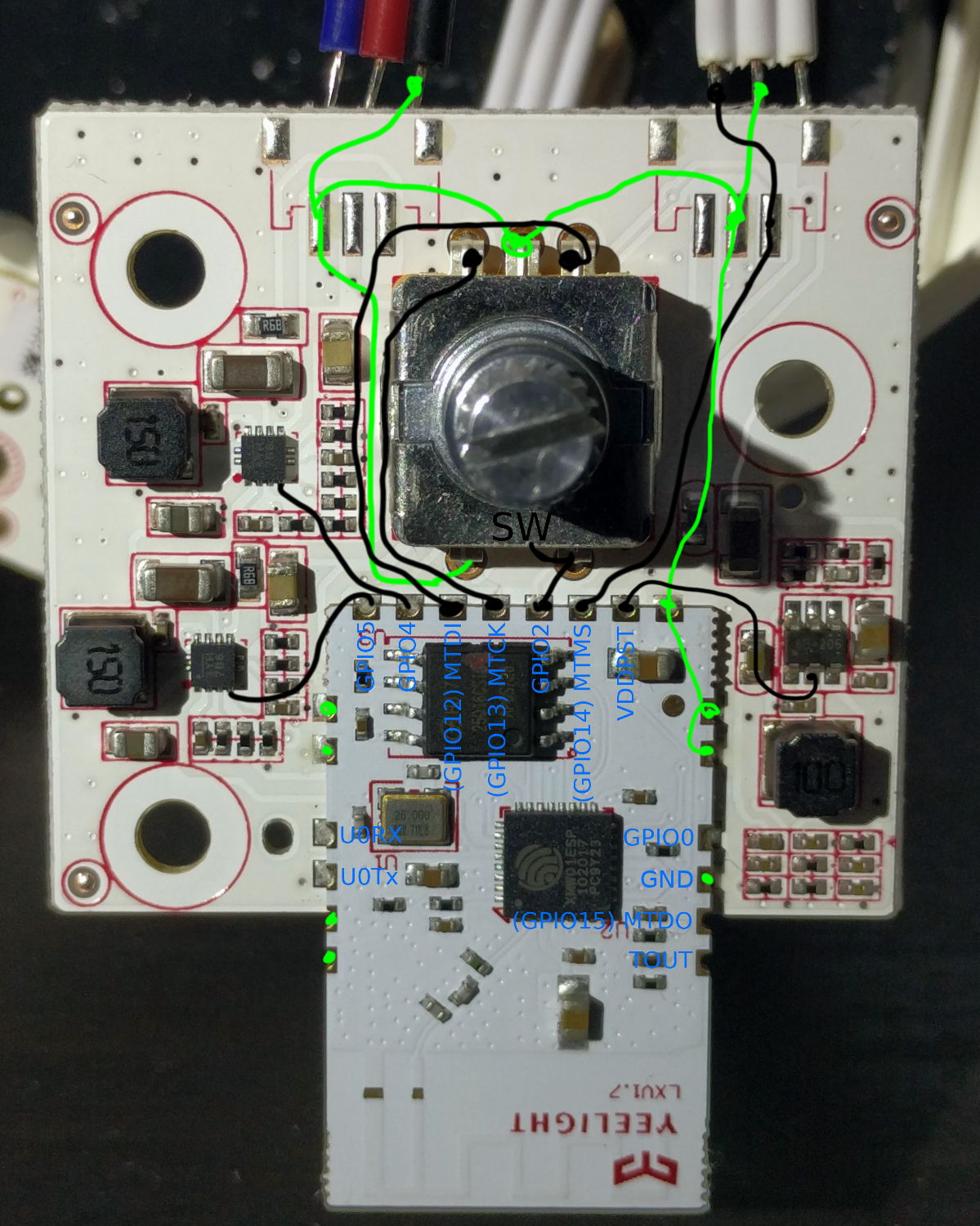Xiaomi Mi Desklamp
substitutions:
friendly_name: Mi Desk Lamp
device_name: mi-desklamp
esphome:
name: ${device_name}
comment: ${friendly_name}
esp8266:
board: esp8285
# Enable logging
logger:
# Enable Home Assistant API
api:
ota:
wifi:
ssid: !secret wifi_ssid
password: !secret wifi_password
# Enable fallback hotspot (captive portal) in case wifi connection fails
ap:
ssid: "Mi-Desk-Lamp-1S Fallback Hotspot"
password: "4Kv4XJ2e9Bmt"
captive_portal:
# Enable Web server
web_server:
port: 80
# Sync time with Home Assistant
time:
- platform: homeassistant
id: homeassistant_time
# Text sensors with general information
text_sensor:
- platform: version
name: ${friendly_name} Version
- platform: wifi_info
ip_address:
name: ${friendly_name} IP Address
sensor:
# Uptime sensor
- platform: uptime
name: ${friendly_name} Uptime
# WiFi Signal sensor
- platform: wifi_signal
name: ${friendly_name} Wifi Signal
update_interval: 60s
# Rotary
- platform: rotary_encoder
id: rotation
pin_a: GPIO13
pin_b: GPIO12
resolution: 2
on_value:
then:
- if:
condition:
# Check if Button is pressed while rotating
lambda: 'return id(button).state;'
then:
# If Button is pressed, change CW/WW
- lambda: |-
auto min_temp = id(light1).get_traits().get_min_mireds();
auto max_temp = id(light1).get_traits().get_max_mireds();
auto cur_temp = id(light1).current_values.get_color_temperature();
auto new_temp = max(min_temp, min(max_temp, cur_temp + (x * 10)));
auto call = id(light1).turn_on();
call.set_color_temperature(new_temp);
call.perform();
else:
# If Button is not pressed, change brightness
- light.dim_relative:
id: light1
relative_brightness: !lambda |-
return x / 25.0;
# Reset Rotation to 0
- sensor.rotary_encoder.set_value:
id: rotation
value: 0
binary_sensor:
- platform: gpio
id: button
pin:
number: GPIO2
inverted: true
on_click:
then:
- light.toggle: light1
output:
- platform: esp8266_pwm
pin: GPIO4
id: output_cold
- platform: esp8266_pwm
pin: GPIO5
id: output_warm
light:
- platform: cwww
id: light1
default_transition_length: 0s
constant_brightness: true
name: ${friendly_name} Light
cold_white: output_cold
warm_white: output_warm
cold_white_color_temperature: 6500K
warm_white_color_temperature: 2650K
gamma_correct: 0

For serial flashing you need two power wires (GND, VDDPST- AKA VCC 3.3v), two serial wires (U0RX, U0TX) and the boot mode pin (GPIO0). On your Serial Adaptor connect U0RX to TX and U0TX to RX. ESP also needs to be put into programming mode before the firmware can be uploaded by connecting GPIO0 pin to GND prior to applying power.